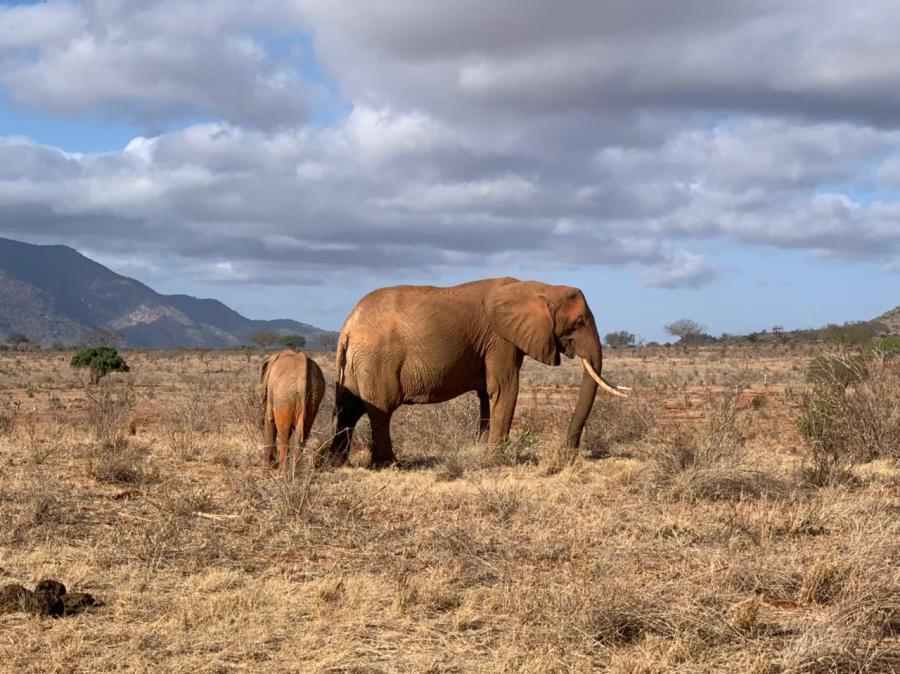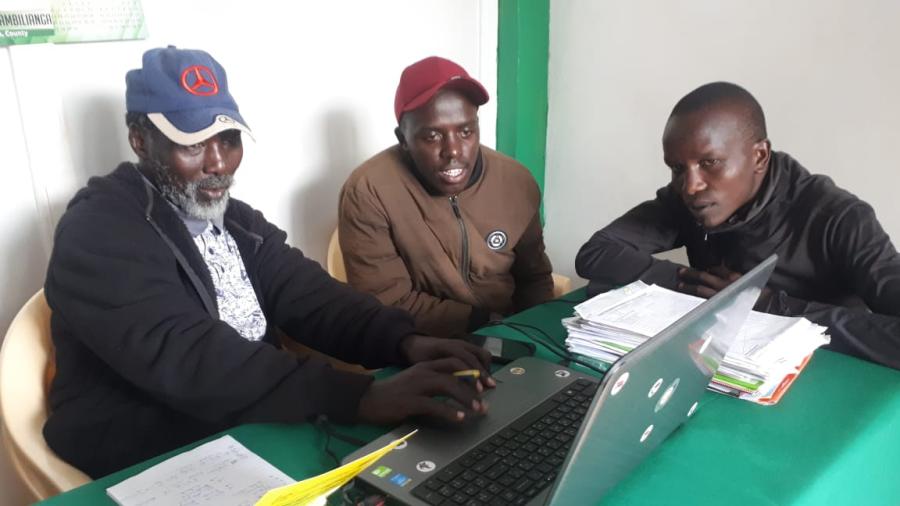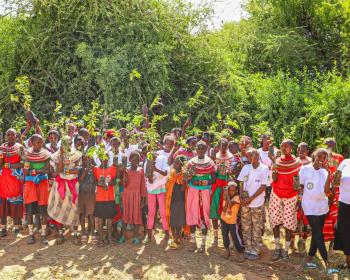
By Shaldon Ferris (CS staff)
Lilian Nguracha Balanga (Samburu) is from the traditionally pastoralist community of Samburu in the North Rift in north-central Kenya. The community moves from place to place in search of pasture and water but now also does some small-scale organic farming. In Samburu culture, wildlife stewardship is entrusted to women, who share with their community where wildlife and other resources are most prominent. Four years ago, Nguracha founded Women Conserve, a grassroots organization based in Samburu that works to elevate women’s leadership and voices in environmental conservation through providing access to education and tools to protect their animals and local environments. She continues that work through the development of the Naapu Ntomonok (Uplifting Women) App.
Only about 60 percent of people in Kenya have access to safe drinking water; this percentage is significantly lower in rural areas. Women are primarily responsible for collecting the water and often have to travel significant distances to access water sources, which are stressed and unevenly distributed due to Kenya’s arid and semiarid climate. Nguracha identified an opportunity to harness the power of technology to turn the burdensome chore of collecting water into an empowering experience for Indigenous women.
Samburu women have always used their Traditional Knowledge to identify water resources, but climate change has brought prolonged droughts to the North Rift region, making clean water harder to find and intensifying water conflicts. The poor quality of the water used for drinking also causes many diseases affecting people and animals. The Naapu Ntomonok App contains satellite maps that help the women mark the boundaries of their territories and identify areas where clean water is available. The app will also help users locate mobile markets to sell and purchase livestock, and contains maps for hospitals and local medical clinics, wildlife migration routes, water sources, and other critical resources. Most importantly, the app seeks to promote a sense of ownership over Traditional Knowledge and the Samburu language, as it will only be accessible to community members. Cultural Survival’s Indigenous Rights Radio Coordinator, Shaldon Ferris (Khoisan), recently spoke with Nguracha.
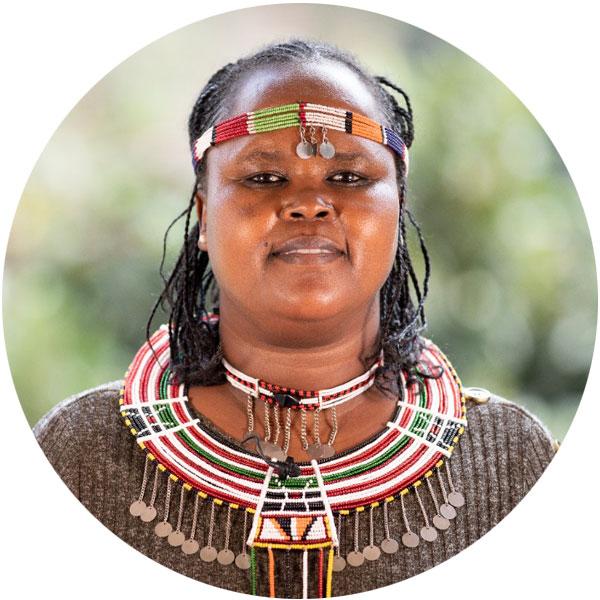
Lilian Nguracha Balanga. Photo courtesy of Lilian Nguracha Balanga.
CS: Please tell us about Women Conserve.
Lilian Nguracha Balanga: Women Conserve is championing women to be great leaders and conservationists. As we know, the people here in Samburu are pastoralists. Women’s voices are very limited in anything that they are doing, in any decision-making, in any enforcement. I came up with that small, grassroots organization to champion the voices of women about the issues affecting them. They are speaking out by using their traditional ways on the issues affecting them, especially gender-based violence, the violation of animals [and] of their natural resources, and also in protecting the environment.
CS: How did you get into tech?
LNB: Last year I went to Canada, and I also joined the Indigenous Hackathon. One of my friends, Diana Mastracci Sanchez, from the GEO Indigenous Alliance, introduced me to the group, and I joined the training. I wanted the people, the Samburu women, the Samburu youth, to share their stories, their skills, and their knowledge in the Samburu language, to use that technology to map out the dispensaries where the women go to access medicine and give birth, the fertile lands they can cultivate, and the markets. Water is life. I wanted more easy access to water by all community members and their animals, but most importantly, for women to walk fewer kilometers in search of water.
CS: Please tell us about the Naapu Ntomonok Samburu App.
LNB: We are still developing the app. The Samburu people move from one place to another. I wanted them to use that app to share their traditional stories, to map the fertile areas, the farming areas. [As] they move from one place to another, the markets also move. Women in the community learn through word of mouth where the markets are opening and sometimes travel for days to reach them, only to find that the market has already closed or moved to a new location. This leaves them losing both time and potential income.
Traditionally, they’ve been using donkeys to track where people live. But in the Naapu Ntomonok App, they will use their traditional language to map the places they want to go, to map the medicine dispensaries where the women go to seek medical attention and also give birth. They can use that app to map fertile lands. They can use that app to map water points. They can use that app to map the hills where they can go pray. They can go see the sacred trees. They can also use that app to know where the animals are, the animal corridors, and where the wildlife corridor passes. The presence or disappearance of particular insects and birds and their songs indicate weather changes. The flowering or shading of leaves from trees are signs of short rains on the way. Changes in wind intensity and directions tell us about the coming rains or droughts and indicate possible directions to migrate to for pastures.
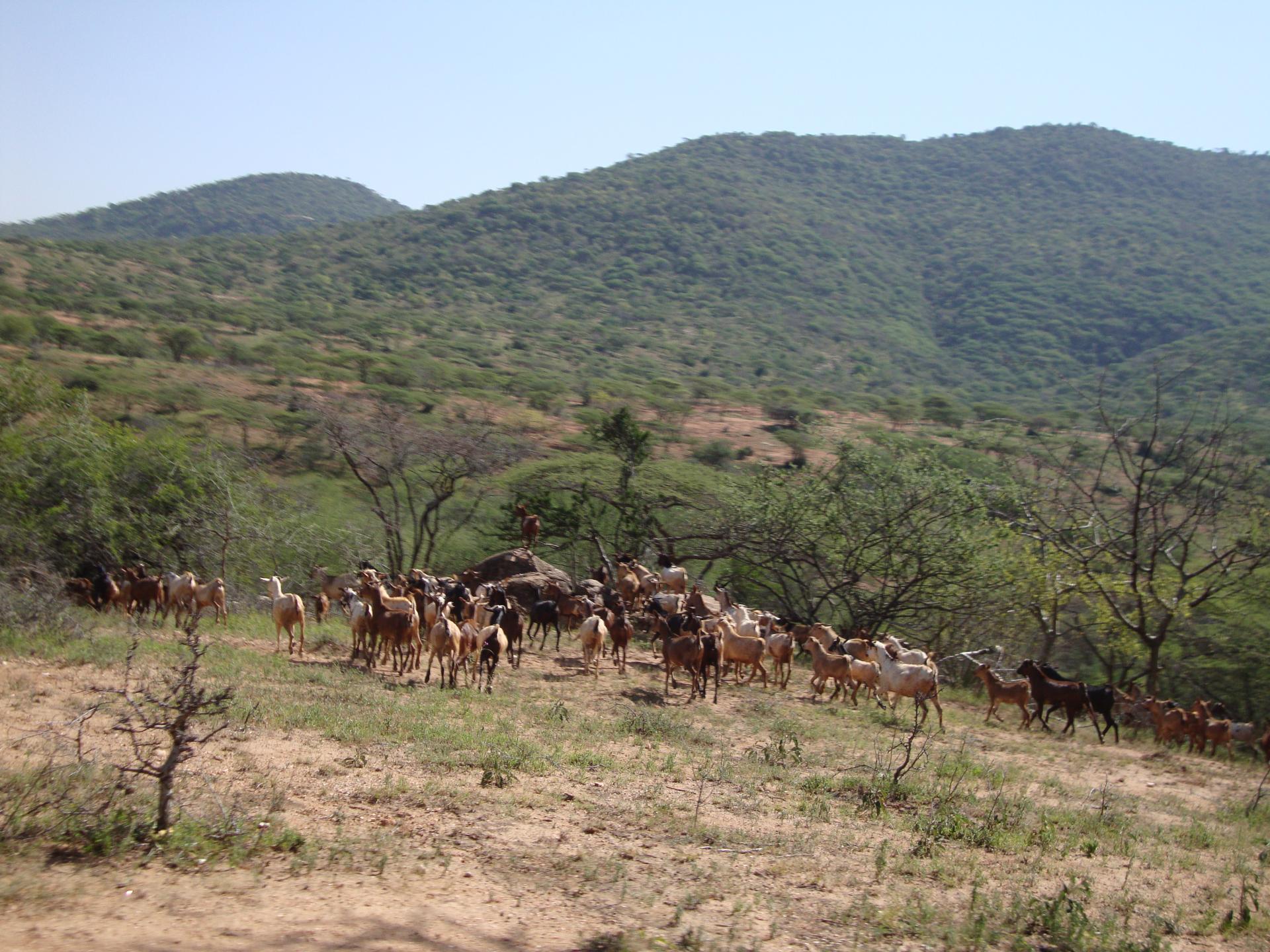
CS: How did the idea for this app come about?
LNB: I wanted to bring the science part of it and the Traditional Knowledge part of it together. In science and technology, Indigenous people are left out. When I went to Canada last year, I was given a chance to present and I told the audience how Indigenous Peoples are being left out and exploited by technology. Investments need to be made in tech projects that incorporate Indigenous Traditional Knowledge. Technology impacts many lives and these platforms have to be very simple, accessible, and usable to the people because, at the end of the day, the people will benefit from them.
Women are the ones who are left at home. When my husband goes to water the cows, I stay at home. We wanted to make this app a tool for women. First, we wanted to [pilot test it]. It’s a new thing, it’s not being used yet. We first wanted to see the impact of it. Then, slowly, we will make it accessible to more women, men, and youth. We are still developing it. I am also not doing it alone; I have people who are also supporting me. I’m not good at technology, actually. I am a development person, but I am also learning so much. I just really appreciate that aspect of life. We are around 45 percent done, and we really need a lot of support.
When I went to Canada, I really learned a lot of things. I learned how people are using space to enhance agriculture. The women here are doing a lot of agriculture. We are trying to use space observation to enhance agriculture by checking the rain, working with the meteorological department, and working with the agriculture department to obtain very good seeds.
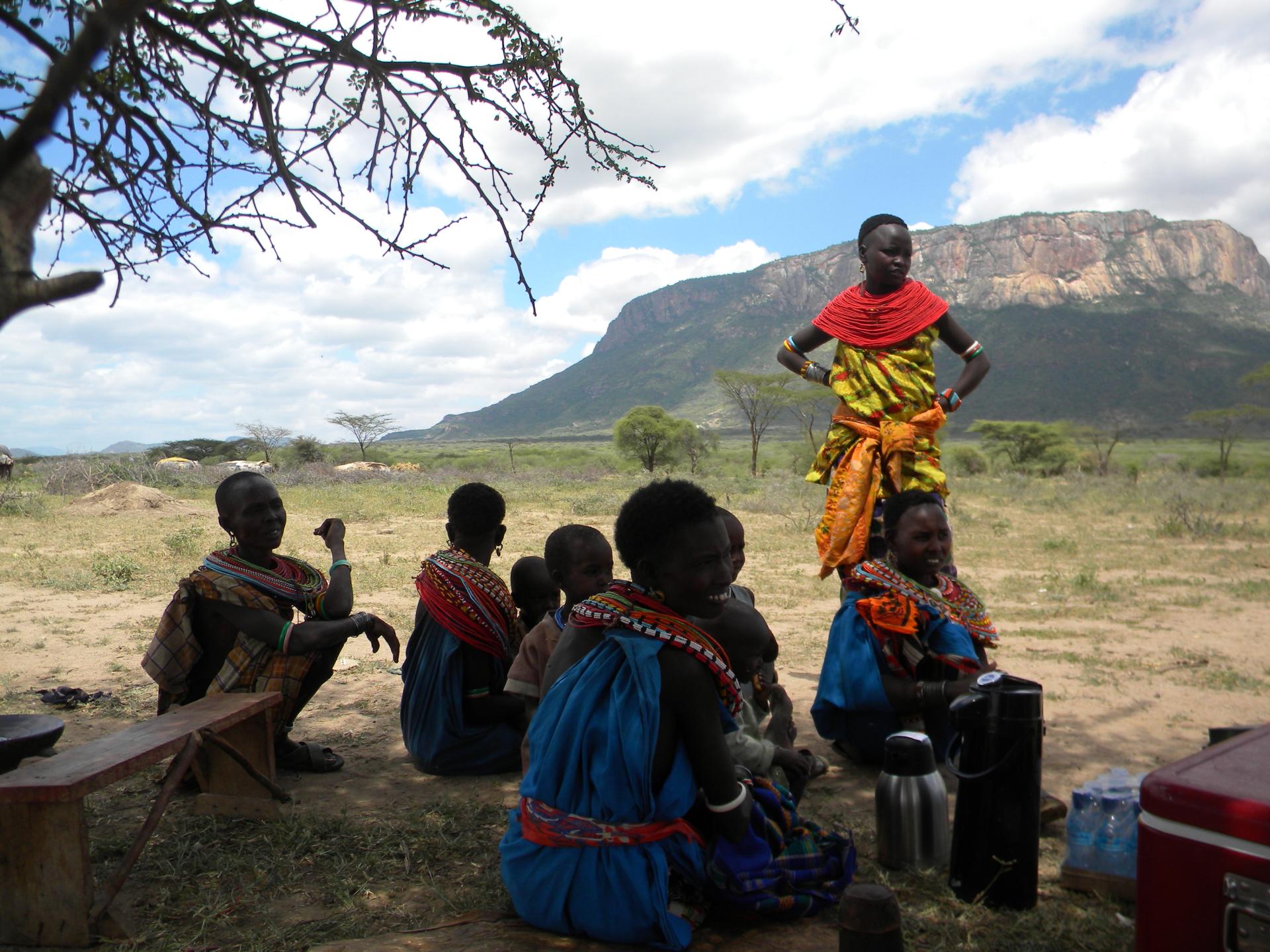
The Naapu Ntomonok App contains satellite maps that will help Samburu women mark the boundaries of their territories and identify where clean water, wildlife, and markets are located.
CS: What is the role of Indigenous Peoples in shaping Earth observation applications such as this one?
LNB: Indigenous Peoples are very important, and their role is critical in any space. Their traditional logistics are still intact, and if we can tap them and use them in the best way with them, not just taking the idea from them and running away, but strengthening them so that they can still own their process . . . our participation and our knowledge [can] play a critical role.
